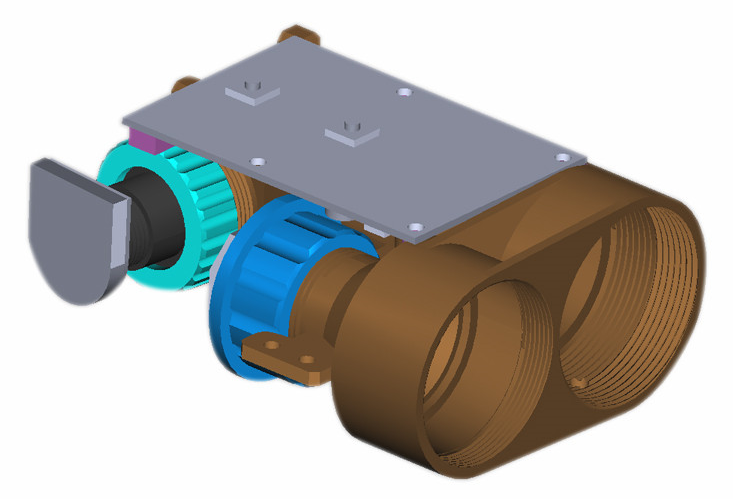This year, Rudong County paid close attention to the implementation of rape seedling raising techniques, with particular emphasis on proper sowing. The sowing date for rapeseed is September 17-23, and the sowing time for sowing is September 20-22, which is 2 to 3 days ahead of last year. After the sowing, the fields in the field were suitable and the emergence was better. At present, the growth of the seedlings was normal, which laid the foundation for the autumn fall. The goal of rapeseed production in the future is to grab transplants early in the season, promote early management by scientific management, and take the initiative to respond to changes at the right time, and realize the autumn and winter strong growth, laying the foundation for the rape harvest.
Daejeon prepares paddy fields for paddy field, no-tillage transplanting or shallow rotary tillage, transplanting after shallow rotary tillage in dry and paddy fields, and timely supporting a ditch system to ensure smooth drainage.
The suitable period for transplanting Rugao rape in proper season is October 25-31. It is expected that the maturation period of rice will be relatively late this year. Rapeseed should be harvested after the rice is harvested and transplanted in appropriate period. Transplanting is late to rape. Qiu Yong Zhuang Zhuang and the impact of yield formation.
The amount of pure nitrogen used as base fertilizer for base fertilizer rapeseeds accounted for 50% of the total nitrogen used in the whole growth period, and pure nitrogen was not less than 8 kg per mu, phosphorus pentoxide was 7.5 kg, and potassium oxide was 7.5 kg. General high-concentration compound fertilizer 50 kg per acre, borax 1 kg, 500 tons of decomposed human and animal dung, each increase of 50 kg of livestock manure to reduce 1 kg of compound fertilizer.
Under the conditions of proper planting and transplanting under proper conditions, usually 3500-4000 strains of rapeseeds are planted in perennial acreage, and 4000-5000 strains per acre are planted in rice boreal rape. In the production, the planting density should be determined according to local conditions in combination with transplanting time, quality of rape seedlings, and fertilization level.
Scientifically transplanting plants to pull shallows into the shallow ditch with a fixed row spacing, evenly fertilize along shallow sulcus, transplant in the north side of the shallow ditch according to the plant spacing, step on the roots, then pick the roots, cover the shallow ditch, and prevent the accumulation of water to cause rot or damage. . The entire operation process must be completed line by line to ensure that soil moisture is not lost.
Post-plant management (1) Replenishment and Miao. After the transplanting, it was arid, especially in the canola and rapeseed, it was necessary to make up the water once, and at the same time, it was good to make up for the deficiency. (2) Weeding and weeding. After doing a live tree, we should do a good job of chemical weeding. We should cultivate and weed as much as we can, and we should root our roots in order to increase soil permeability, increase soil temperature, and promote growth. (3) Control pests. Rapeseed is often harmed by aphids and cabbage caterpillars after transplanting. (4) Prevent freezing damage. According to the meteorological department's forecast, the total rainfall during the autumn (September-November) will be normal or slightly less normal, and the average temperature will be normal or slightly higher. The first frost will appear in late November, which is later than the normal year. The weather conditions before the rape winter The overall situation is more favorable. Prosperity and other situations may occur. Production must have a sense of protection against winter freezing damage. On the one hand, it is necessary to cultivate winter seedlings and improve their own antifreeze ability. Before wintering, use 15% paclobutrazol wettable powder 60 to 80 grams per mu or dwarf seedling 50 to 60 grams to add water spray, control and promote strong; on the other hand It can be warmed and protected against freezing by adding organic fertilizers, roots, roots, ash, or stalks.
Laser rangefinder module, which has two application, one is mainly designed for long distance range finder, another is for secondary development industrial Laser Distance Sensor, which support ttl/usb/rs232/rs485 adapter output data.
With different range measuring program, JRT laser measure tools module, can satisfy customers` different requirements, 200m, 300m, 500m, 1000m, 1200m, 1500m, 3000m.
We have been in this line for 10 years, with a strong R&D ability and hard working, we are now a leading supplier of Laser Distance Meter modules in China.
Product Specifications:
|
Measuring Range (without Reflection) |
5-500m/5-1000m/5-1500m/5-3000m |
|
Accuracy |
±1 m |
|
Laser Class |
Class I |
|
Laser Type |
905nm |
|
Magnification |
6X |
|
Battery type |
CR2-3V |
|
Operating Temperature |
-10-50 ℃ (14-122 ℉ ) |
|
Size |
28*69*60mm |
|
Weight |
About 4g |
|
Operating Temperature |
-10-50 ℃ (14-122 ℉ ) |
|
Storage Temperature |
-25~60 ℃ (-13~140 ℉) |

Laser Rangefinder Sensor,Laser Range finder Sensor,Laser Rangefinder Module,Laser Range Finder Module
Chengdu JRT Meter Technology Co., Ltd , https://www.cdlaserdistancemeter.com